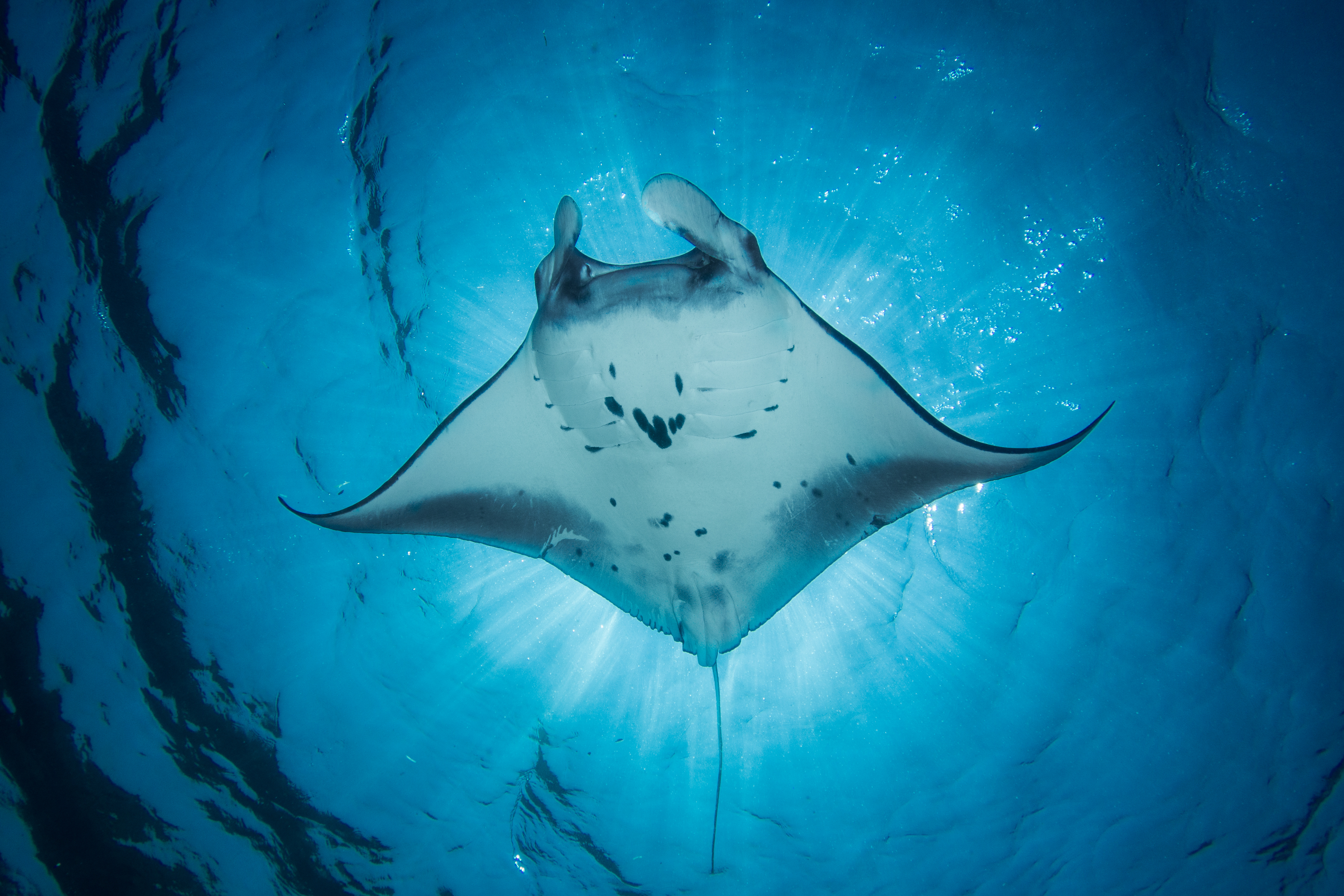

| Attributes | Information |
|---|---|
Habitat | Mantas are found in tropical and subtropical waters in all the world's major oceans, and also venture into temperate seas. The furthest from the equator they have been recorded is North Carolina in the United States (31°N) and the North Island of New Zealand (36°S). They prefer water temperatures above 68 °F (20 °C).Mantas are common around coasts from spring to fall, but travel further offshore during the winter. They keep closeWindow() to the surface and in shallow water in daytime, while at night they swim at greater depths. |
Physical Appearance | Manta rays are recognized by their large diamond-shaped body with elongated wing-like pectoral fins, ventrally-placed gill slits, laterally-placed eyes, and wide, terminal mouths. In front of the mouth, they have two structures called cephalic lobes which extend and help to channel water into the mouth for feeding activities (making them the only vertebrate animals with three paired appendages).Manta rays come in two distinct color types: chevron (mostly black back and white belly) and black (almost completely black on both sides). They also have distinct spot patterns on their bellies that can be used to identify individuals. |
Size | The size of a Manta Ray can vary, but their wingspan, which is the distance between the tips of their pectoral fins, typically ranges from 9.8 to 11.5 feet (3 to 3.5 meters). Some individuals can even grow up to a wingspan of 18 feet (5.5 meters).For comparison, this is about the size of a school bus! Their body length is typically smaller than their wingspan, at around 5 to 5.75 feet (1.52 to 1.75 meters). Despite their large size, these gentle giants are filter feeders and pose no threat to humans. |
Diet | Manta Rays feed only on tiny plankton and small fish. They will swim with their mouths wide open and their cephalic fins extended to funnel water through their mouths and over their gills, where their specialised gill rakers will filter out the plankton. In particularly productive plankton patches they can be seen performing barrel rolls while feeding in the same spot. |
Reproduction | Manta rays have among the lowest fecundity of all elasmobranchs (a subclass of cartilaginous fish), typically giving birth to only one pup every two to three years. Gestation is thought to last around a year. Although manta rays have been reported to live at least 45 years, not much is known about their growth and development. |